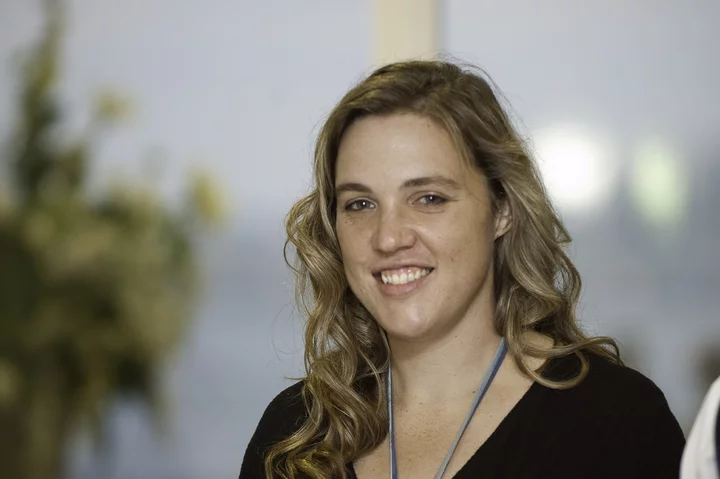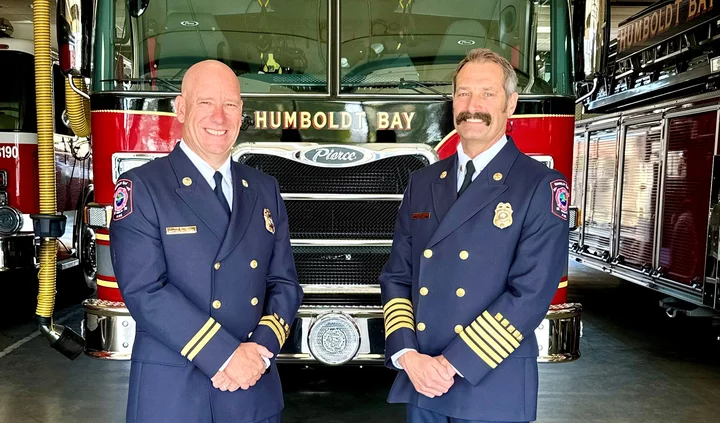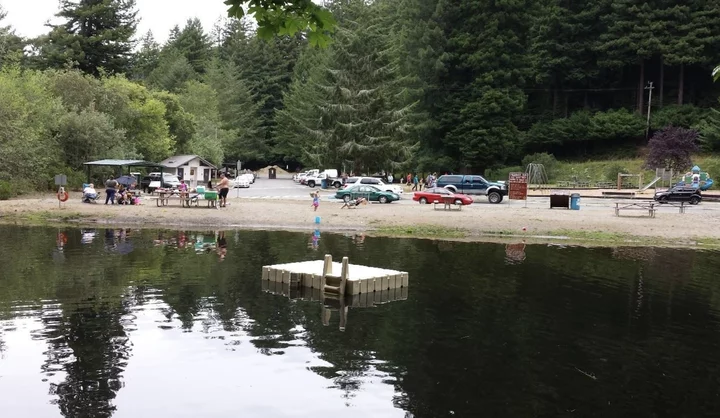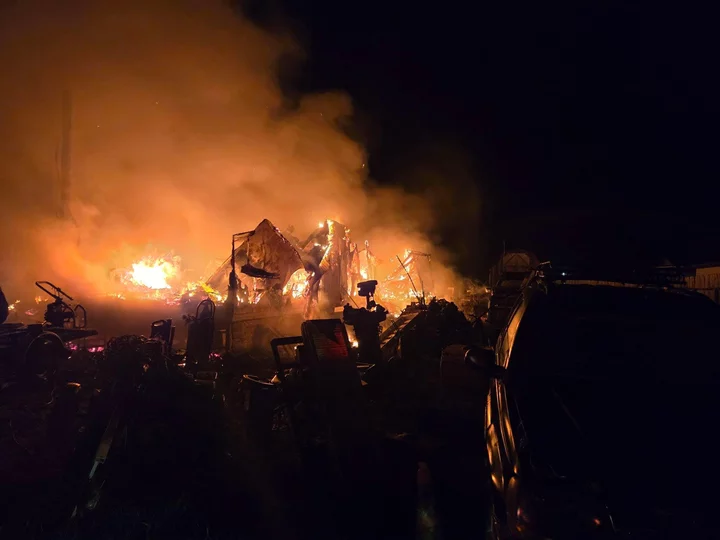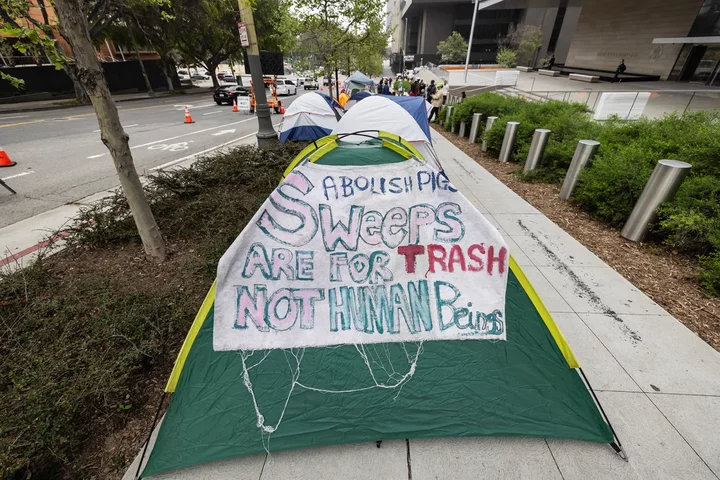OBITUARY: Elissa Christine Henning, 1981-2024
LoCO Staff / Saturday, June 29, 2024 @ 6:56 a.m. / Obits
We are sad to announce the passing of our sister, Elissa, in Arcata on May 30, 2024. She was preceded in death by her parents Stephen and Mary Nesvold.
Elissa was a fun-loving, kind and intelligent woman who brought joy and happiness to everyone around her. She had an infectious smile and a knack for making everyone feel welcome.
Elissa graduated from Ferndale High School as the valedictorian in 1999. While attending Ferndale High she became very decorated in both athletics and academics. She then went on to Sonoma State University where she graduate with a Bachelors of Arts Degree in 2003 with honors Summa Cum Laude. Post graduation she attended Cal Poly Humboldt’s teaching credential program and afterwards she pursued her passion by substitute teaching at Ferndale High School before moving to administration at Cal Poly Humboldt.
While Elissa loved unicorns, white mochas, Taylor Swift and a good theme party, she loved spending time with her family above all else. Any opportunity to spend with her brothers and nieces filled her heart and she would take full advantage and travel distances to not miss those moments. She was a loving sister, devoted daughter and an even better aunt to her nieces.
When she wasn’t visiting family, Elissa enjoyed spending time with friends and her long time boyfriend Jason. They would attend various events such as comedy shows and concerts, and also enjoyed a night in watching movies and hang out with Jason’s children’s Cyrus and Alex.
There was nothing too small for Elissa to appreciate, whether it was getting her a coffee in the morning or just video chatting with her on a Sunday. She expressed her gratitude like no other, her excitement and enthusiasm was one of a kind and something people close to her will never forget.
She is survived by her siblings and father: Justin Mattly (Jessica), Chris Nesvold (Lea), Alex Nesvold (Melissa), Trevor Nesvold (Lea), nieces Skylar Mattly, Finley and Kary-Lynn Nesvold, Father Bill Mclaughlin (Jeanette).
A celebration of life will be held on:
August
3, 2024 at 11 a.m.
Ferndale
Firemen’s Pavilion
100
Berding St
Ferndale California
Please wear something fun and colorful or anything: unicorn, crocs or Taylor Swift. She would have wanted a happy colorful event in her honor.
###
The obituary above was submitted on behalf of Elissa Henning’s loved ones. The Lost Coast Outpost runs obituaries of Humboldt County residents at no charge. See guidelines here.
BOOKED
Today: 11 felonies, 16 misdemeanors, 0 infractions
JUDGED
Humboldt County Superior Court Calendar: Today
CHP REPORTS
No current incidents
ELSEWHERE
Governor’s Office: Governor Newsom announces appointments 12.12.2025
County of Humboldt Meetings: Fish & Game Advisory Commission Agenda - Regular Meeting
Governor’s Office: TIME’s Person of the Year was Made in California
Governor’s Office: Governor Newsom visits LA recovery efforts in Altadena and the Palisades, views homes set to be completed soon
Humboldt Bay Fire Says a Sad Koebaai to Outgoing Chief Sean Robertson; Issues a Hearty Howzit? to Incoming Chief Tim Citro
LoCO Staff / Friday, June 28, 2024 @ 4:11 p.m. / Local Government
Citro (left) and Robertson (mustache). Photo: Humboldt Bay Fire.
Press release from Humboldt Bay Fire:
Humboldt Bay Fire Joint Powers Authority Fire Chief Sean Robertson has announced his retirement beginning December 30, 2024.
Beginning his career as a Volunteer Firefighter in Arcata, Robertson quickly proved himself to be a reliable and skilled professional. Over the past 26 years, his extensive experience and deep knowledge have made him an invaluable asset to Humboldt Bay Fire, Eureka Fire Department, Humboldt No. 1 Fire Protection District, and the community he serves. His tenure has been defined by exemplary leadership, consistently going above and beyond to ensure the safety and well-being of the community while effectively guiding Humboldt Bay Fire.
Humboldt Bay Firefighters Local 652 President Brandon Harlander stated, “Chief Robertson has demonstrated unwavering support for labor rights, creating a collaborative environment that values the contributions of every member of Humboldt Bay Firefighters Local 652. His leadership embodies unity and strength, safeguarding our community with resolve and compassion. We thank Chief Robertson for his exceptional leadership and unwavering commitment to HBFL 652 and Humboldt Bay Fire. We are excited about his upcoming work at College of the Redwoods and are confident that it will further support and enhance the foundation that Chief Robertson and Union leadership have established.”
Sean Robertson stands as a paragon of dedication, leadership, and service. His contributions have left an indelible mark on Humboldt Bay Fire. As he continues his journey, Sean’s legacy will inspire future generations of firefighters and community members, as he becomes the Assistant Professor in Fire Technology at College of the Redwoods. Chief Robertson will be instrumental in developing and maintaining the Fire Technology curriculum, with the goal of achieving State Fire Training accreditation for the current fire academy.“Chief Robertson was appointed Fire Chief by the JPA Board in 2018 and has led the JPA through challenging times, including the Covid pandemic and severe staffing shortages. His strategic planning, department-building efforts, and the strong relationships he has fostered have established a solid foundation for ongoing success. While we will miss Sean and his remarkable leadership, we are excited for him and his future endeavors. We are confident that the organization will continue to move in a positive direction under Tim Citro’s leadership. Chief Citro, with his strong ties to the community and extensive experience working alongside Chief Robertson, has the full confidence of the Board to lead Humboldt Bay Fire effectively into the future,” said Humboldt Bay Fire Board of Directors Chair Jo Wattle.
Humboldt Bay Fire Board of Directors has selected Battalion Chief Tim Citro as the new Fire Chief, succeeding Fire Chief Sean Robertson. Citro will serve as Interim Fire Chief from September 1 through December 29 and will assume the role of Fire Chief starting December 30.
Battalion Chief Citro brings over 30 years of Fire and EMS experience, beginning his career at the age of 14 as a Fire Explorer and Reserve Firefighter with the Healdsburg Fire Department. He later relocated to Humboldt County to attend Cal Poly Humboldt, where he joined the Arcata Volunteer Fire Department. After earning his degree, he worked for City Ambulance of Eureka as an EMT-1 and completed his Paramedic training.
In 1999, he was hired as a Firefighter/Paramedic with the Peninsula Fire District in Lake Almanor, California. A year later, he joined Humboldt No. 1 Fire Protection District, where he has dedicated 25 years, serving in various roles, including Firefighter, Engineer, Captain, Captain/Duty Officer, and Battalion Chief. Citro holds a Bachelor of Arts degree in Geography with a Minor in Geology from Cal Poly Humboldt. He is certified by the California State Board of Fire Services as a Fire Officer and Chief Officer, is a California Licensed Paramedic, and is a graduate of the National Fire Academy’s Executive Fire Officer Program. He has been married to his wife Lauri for 26 years, and they have two adult daughters, Molly and Allissa. He enjoys spending time with his family, traveling, and playing golf in his free time.
“I’m excited for the opportunity to lead the men and women of Humboldt Bay Fire as the next Fire Chief,” Citro said. “I am committed to ensuring that Humboldt Bay Fire continues to add value to the community and improve the quality of life for our customers by delivering the highest level of EMS, Rescue, and Fire services.”
Humboldt Bay Fire extends its heartfelt gratitude to Chief Sean Robertson for his 26 years of exemplary service. His leadership and commitment have significantly shaped the department, and we wish him all the best in his retirement. Chief Robertson “Would like to deeply thank Humboldt Bay Fire for the great privilege and honor of leading and working with such an incredible group of people who inspired me every day through their dedication, professionalism, and commitment to making our community a better place.”
Your Humboldt Summer Can Now Include Trips to Freshwater County Park, Which is Open for the Season
LoCO Staff / Friday, June 28, 2024 @ 1:53 p.m. / Nature
Humboldt County Department of Public Works release:
The Environmental Services Division of the Humboldt County Public Works Department is excited to announce that the swimming area at Freshwater County Park is ready to be enjoyed following installation of the seasonal dam on Freshwater Creek. The dam is expected to stay installed through Labor Day, Monday, Sept. 2 and will be removed prior to the winter wet season.
Hours of Operation
Freshwater Park is open from sunrise to sunset for a day-use fee of $5 per vehicle, or $2 for walk-ins or bike-ins. Annual passes are available for purchase for $45 at the gate house. In addition to the swimming area, amenities at Freshwater Park include an Americans with Disabilities Act (ADA) accessible playground, volleyball court, restroom and picnic areas. Parking is available subject to vehicle limits. The Freshwater Park gazebo area is open for group reservations through Saturday, Nov. 30. To make a gazebo reservation, please call 707-445-7651.
Tips for Visiting
The water in the Freshwater Park swimming area is cold, so visitors should prepare accordingly. For the safety of the public, please not use alcohol or drugs, including some prescription drugs, before swimming at Freshwater Park. Small children and inexperienced swimmers should wear a U.S. Coast Guard-approved life jacket or flotation device while swimming. The use of water wings is not recommended for small children.
Park visitors are asked to be courteous to other people at the park and respectful of the wildlife and plant communities. Dogs are not allowed due to the high density of park visitors. Camping, motorcycles, fires and firearms are prohibited.
About the Freshwater Park Swimming Area
Freshwater Park is an eight-acre county park located approximately seven miles from Eureka, at 3100 Freshwater Rd., approximately 3.5 miles southeast of Myrtle Ave. The County of Humboldt has owned and operated Freshwater Park since 1939. Freshwater Creek meanders through the park, and the park’s main attraction during the summer is a swimming area created by a seasonal dam, which has been installed most summers since the 1920s.
Freshwater Creek drains into Humboldt Bay via Eureka Slough and provides productive habitat for salmon and steelhead. Upon installation of the seasonal dam, the pool provides deep, cold water that is an ideal environment for juvenile fish. A concrete fish ladder allows juvenile fish to move freely upstream and downstream of the dam when inflows are sufficient. The concrete fish ladder is adjacent to the dam and viewable by the public.
After several weeks of work by the Humboldt County Parks Division to remove sediment from the fish ladder, removable I-beams and flashboard panels are installed with a crane to form the seasonal dam. The Department of Public Works would like to thank the Humboldt County Roads Bridge Crew, California Department of Fish and Wildlife and the Humboldt County Sheriff’s Work Alternative Program for their tremendous work and partnership to safely install the dam this year.
For more information on Humboldt County parks and trails, please visit the Parks and Trails webpage or call 707-445-7651.
In Its Final Report of the Year, Grand Jury Concludes That the Child Welfare Services Ombudsperson is Falling Short of the Role Defined For it When the County Settled a Big State Lawsuit
Hank Sims / Friday, June 28, 2024 @ 11:17 a.m. / Local Government
This was a solid and very substantive year for the Humboldt County Civil Grand Jury. It ends with an investigation into the Office of the Ombudsperson at the county’s Child Welfare Services office, a division of the county’s Department of Health and Human Services.
The Office of the Ombusdperson was created in 2018 to settle a lawsuit brought against the county by then-California Attorney General Kamala Harris, and the conclusion of this Grand Jury investigation, which you should read in full, is damning:
The Humboldt County Civil Grand Jury concludes that the Child Welfare Services Office of the Ombudsperson does not fulfill its stated mission and instead serves as an ineffective complaint department. By directing the Ombudsperson to not provide resolutions to complainants, management consistently violates CWS Policies & Procedures, and contradicts the 2018 stipulated agreement. The Office of the Ombudsperson is not independent in any way, and the very structure of the office provides opportunities for conflicts of interests.
This was only one of several meaty reports the GJ released this year.
On behalf of the citizens of Humboldt County: Thank you for your service, 2023-24 Grand Jury members. Full list of reports below. If you’re inspired by this work and you have time on your hands, consider putting your name in for the 2024-25 Grand Jury. They need good people.
###
DOCUMENT:
PREVIOUSLY:
- California AG Investigation Concludes With Agreement Requiring Sweeping Changes to Humboldt Child Welfare Services
- Flaws in County System for Reporting Child Abuse and Neglect Triggered a State Investigation. Here’s What’s Changing As a Result.
###
Press release from the Humboldt County Civil Grand Jury:
The Humboldt County Civil Grand Jury has released the eighth and final report of their 2023-2024 term, entitled “Child Welfare Services: Office of the Ombudsperson.”
In 2023 the Humboldt County Civil Grand Jury received a complaint regarding Child Welfare Services (CWS), a branch of the Humboldt County Department of Health and Human Services. Among several other issues, the complainant told us that after contacting the CWS Office of the Ombudsperson to lodge a complaint and receive assistance, they never received a reply. The Humboldt County CWS Office of the Ombudsperson was created in 2018 as part of a legal settlement with the State of California that required CWS to establish a complaint office to give a voice to families involved in the Child Welfare Services system.
We investigated the current state of this office and found that it does not follow through on promises made on the CWS website and that current practices violate CWS’s own policies. We found that CWS regularly refers to the Office of the Ombudsperson as “independent” but that in reality it is intricately woven into the CWS structure. We found that CWS is good at keeping records about complaints received but does not provide information about complaint outcomes involving violations of policy, procedure, or civil rights. Moreover, we found that the public has no way to know if these violations have been addressed, individually or systemically.
Crucially, we found that many people who make complaints never learn the outcomes of their complaints from CWS. These complainants are people in difficult situations. They may be at risk of losing their children, may have seen their children be abused by others, or may be abusers themselves. Whatever the case, they contact CWS to find answers, instead finding silence. Our conclusion is that CWS has an Office of the Ombudsperson in name only.
The 2023-2024 term of the Humboldt County Civil Grand Jury comes to a close on June 30. We would like to say “thank you” to the hundreds of people who helped us this year, in all ways, large and small. Without you the Civil Grand Jury, your jury, couldn’t do the work we do.The 2024-2025 term for the Civil Grand Jury is approaching quickly. The Superior Court, of which the Grand Jury is an arm, is in desperate need of jurors. This is a very enriching experience and gives you a chance to learn about and give back to your community.
The time commitment is, at minimum, six hours a week, three hours via a Zoom meeting and three hours at an in-person meeting in Eureka. Later in the term more hours are needed but for the most part these extra commitments can work around your schedule. There is a small stipend (equal to $20 per seven hours) and mileage to and from meetings and interviews are paid for. Applications to serve on the Humboldt County Civil Grand Jury can be found at this link. Additional information provided by the Civil Grand Jurors Association of California can be found at this link.
###
THE 2024 HUMBOLDT COUNTY CIVIL GRAND JURY:
- In First Report of the Year, Grand Jury Recommends Civilian Oversight Board for the Humboldt County Sheriff’s Office
- Civil Grand Jury: Humboldt County Pays Too Much in Rent and Should Probably Consolidate Services Whenever It Can Afford to Do So
- Civil Grand Jury: Humboldt County’s Jail and Other Facilities Suffer From Under-Staffing. And They’re Old.
- Grand Jury Slams Eureka City Schools For ‘Secretive’ Jacobs Campus Deal
- GRAND JURY SAYS: With Limited Funds and Skyrocketing Buildings, the Arcata Fire District is in Serious Trouble
- Grand Jury Takes Deep Dive on Humboldt County’s Mental Health Crisis Street Teams
- Grand Jury Analysis Shows That County Government Has a Hell of a Time Trying to Hire Qualified Employees and Offers Some Simple Suggestions
Manila Home Consumed By Fire Last Night; Structure Destroyed, Dogs Perish, Cause Unknown, Says Arcata Fire District
LoCO Staff / Friday, June 28, 2024 @ 8:24 a.m. / Fire
Manila fire. Photo: Arcata Fire District.
Press release from the Arcata Fire District:
On Thursday, June 27 at 11:30 P.M., units from Arcata Fire District, Humboldt Bay Fire Authority, and Westhaven Volunteer Fire Department responded to a reported structure fire (barn on fire) on the 100 Block of Wagon Jack Lane off Fickle Hill Road in Arcata.
The first arriving Arcata Fire unit found a fully involved 20 foot by 30 foot barn. The residents of the property indicated that there were no people inside the building. The structure had already collapsed before fire personnel arrived. Firefighters engaged in a defensive operation, protecting nearby residences.
While fighting this fire, Arcata Fire District, Samoa Fire Protection District, and Humboldt Bay Fire Authority were dispatched to a reported residential structure fire in the Manila area. Some units involved in the barn fire on Fickle Hill were immediately released and responded to the residential fire in Manila.
Samoa Fire Protection District arrived on scene first and reported a fully involved manufactured home with the occupants outside. Humboldt Bay Fire and Arcata Fire District units arrived next and secured a water supply. Units protected nearby structures from radiant heat from the now collapsed manufactured home. While fighting the fire, personnel were advised that the occupant of the home was suffering from smoke inhalation. An ambulance was requested to the scene. Fire personnel rendered aid and evaluated the patient. The patient denied any additional medical treatment. As fire personnel got the fire under control, the scene was investigated for the cause.
During the investigation, firefighters learned that the occupant’s dogs had alerted him to the fire that had started in the kitchen area. The occupant was able to get out, however, his dogs were not and perished in the blaze.
Due to the extent of the damage at both fires, investigators were unable to determine a precise cause for either fire.
Both structure fires were total losses. The estimated loss to the barn on Fickle Hill is approximately $40,000. The loss to the residence in Manila was approximately $90,000. Arcata Fire District extends our thoughts to both families for the losses they suffered as fires can be emotionally traumatic- especially with the loss of pets. Smoke alarms are the best way to be alerted to a fire, allowing occupants to escape.
Thank you to our allied partners Samoa Fire District, Humboldt Bay Fire Authority and Westhaven Volunteer Fire Department who responded to both fires.
###
UPDATE: A GoFundMe for the victim has been set up here.
Supreme Court Gives Cities in California and Beyond More Power to Crack Down on Homeless Camps
Marisa Kendall / Friday, June 28, 2024 @ 7:34 a.m. / Sacramento
Tents outside the First Street U.S. Courthouse in Los Angeles, where homeless advocates and supporters rallied as the U.S. Supreme Court in Washington D.C. heard oral arguments in the Grants Pass case, on April 22, 2024. Photo by Ted Soqui for CalMatters
The U.S. Supreme Court today granted cities more power to arrest, cite and fine people who sleep outside in public places — overturning six years of legal protections for homeless residents in California and other western states.
In Grants Pass v. Johnson, the court sided with Grants Pass – ruling an ordinance passed by the Oregon city that essentially made it illegal for homeless residents to camp on all public property was not unconstitutional.
The much-anticipated decision overturns a prior influential Ninth Circuit appellate ruling, and means cities no longer are prohibited from punishing unhoused residents for camping if they have nowhere else to go. It will have major ramifications for how California leaders and law enforcement handle homeless encampments.
Activists supporting the civil rights of unhoused people decried the ruling, saying it could result in people getting arrested simply for being homeless.
“It will make homelessness worse, in California and Grants Pass and across the country,” said Jesse Rabinowitz, spokesperson for the National Homelessness Law Center. “We know that throwing people in jail and giving them thousands of dollars in tickets makes it harder for them to find jobs, harder for them to find housing and harder for them to exit homelessness.”
But groups representing cities, counties, law enforcement organizations and business interests cheered the decision, saying it would finally allow for the removal of unsafe, unsanitary encampments. Even Gov. Gavin Newsom weighed in, filing a “friend of the court” brief in which he wrote: “Hindering cities’ efforts to help their unhoused populations is as inhumane as it is unworkable.”
“Homelessness is a crisis in California. The misguided 9th Circuit decision has tied the hands of local officials, allowing encampments to multiply unchecked,” California Republican Rep. Kevin Kiley of Rocklin said in an email to CalMatters. “Cities need to be able to act to protect public health and safety, while at the same time connecting those in need with services.”
Those who are or have been homeless are worried about what happens now. Anita De Asis Miralle, who goes by “Needa Bee,” was homeless for about eight years before finding housing in Oakland earlier this year. De Asis Miralle, who advocates for other unhoused people through her grassroots group The Village, worries the ruling will lead to cities disregarding their rights. Already, she said, she’s seen Oakland clear encampments without offering occupants adequate shelter. To her, those sweeps rip apart communities and take away people’s precarious sense of stability.
“The big fear is not only how bold they’re going to be,” De Asis Miralle said, “but how much deeper into instability and trauma and homelessness it will drive people.”
How we got here
The case stems from a 2018 lawsuit against Grants Pass, a small city in Southern Oregon that banned camping throughout its jurisdiction. The lower courts sided with homeless residents who argued that because humans need to sleep somewhere, the Grants Pass ordinance made it illegal to be homelessness.
That decision was in line with an earlier Ninth Circuit appellate ruling – Martin v. Boise – which determined that punishing an unhoused person for camping in public, if they have nowhere else to go, violates the Constitution’s 8th Amendment ban on cruel and unusual punishment.
The 2018 Boise ruling changed how cities respond to homeless encampments. Many interpreted the court decision to mean that they could not clear an encampment unless they had a shelter bed available for every displaced resident. Local courts have hit several California cities, including San Francisco, Sacramento, Chico and San Rafael, with orders halting or delaying encampment clean-ups due to lack of adequate shelter.

An encampment covers a sidewalk near a freeway entrance in downtown San Diego on March 22, 2024. Photo by Kristian Carreon for CalMatters
The COVID pandemic made the situation more complex. In 2020, federal health regulations recommended that cities not clear any encampments, in order to limit the spread of the virus and protect vulnerable homeless residents. Encampments in many California cities grew and became more entrenched, with residents building make-shift shacks out of scraps of wood and metal.
When vaccines arrived and concern about the pandemic gradually died down, it left in its wake a growing discontent over the proliferation of homeless encampments in public open spaces. With that came a chorus of complaints from city leaders and law enforcement that the Boise ruling stripped them of the power to enforce rules regarding homeless residents.
It’s an issue that’s particularly crucial in California, which is home to nearly a third of the country’s homeless population. More than 180,000 unhoused people live in the Golden State, including more than 123,000 people who sleep in encampments or other places not meant for habitation.
Multiple California cities already are cracking down on those homeless camps. Some are getting around the Boise ruling by banning camps in certain areas rather than throughout the entire city. San Diego recently started enforcing a controversial ordinance that prohibits camps near schools, shelters and transit hubs, in parks, and – if shelter beds are available – on all public sidewalks. At the same time, the city opened two sanctioned tent campsites where about 500 unhoused people can sleep.
San Diego’s ordinance has led to a noticeable decrease in the number of homeless residents camping downtown. But camping is just as prevalent – if not more so – along highway on- and off-ramps, and along the San Diego River.
State Senate Bill 1011 by GOP leader Brian Jones would have imposed a statewide camping ban similar to San Diego’s. But the bill died in its first committee hearing, suggesting a lack of appetite for a statewide crackdown.
Activists who provide homeless services, as well as researchers who study the population, say cities should not be able to break up encampments with impunity. Encampment sweeps cause homeless residents to lose important belongings and documents, push them farther away from their sources of food, medicine and other services, and – especially if arrests or citations are involved – make it harder for them to find jobs and housing, according to experts.
“The enforcement of laws criminalizing homelessness has been shown to have wide-ranging and lingering negative impacts on those experiencing homelessness, which create significant barriers to exiting homelessness,” a group of more than 50 social scientists specializing in homelessness wrote in a “friends of the court” brief in the Grants Pass case.
The Supreme Court heard oral arguments in April. In their comments and questions, the justices appeared divided along ideological lines, with the liberal justices more sympathetic to the arguments of the homeless residents. The Supreme Court has a 6-3 conservative majority.
Underscoring the importance of the case, more than three dozen elected officials and organizations weighed in by filing “friend of the court” briefs.
###
CalMatters.org is a nonprofit, nonpartisan media venture explaining California policies and politics.
Parents’ Lawsuit Forces California Schools to Track Discrimination Against Students
Carolyn Jones / Friday, June 28, 2024 @ 7:26 a.m. / Sacramento
Students walk down a hallway at Fremont High School in Oakland on Oct. 10, 2023. Photo by Laure Andrillon for CalMatters
California will play a more active role in ensuring school districts don’t discriminate against students with disabilities, English learners and Black students, under a legal settlement announced this week.
The agreement between the state and the American Civil Liberties Union of Northern California requires state authorities to visit schools, interview teachers, look at individual students’ records and take more hands-on steps to see if a school has a pattern of discriminating. Specifically, the state will examine whether schools disproportionately suspend Black students or English learners, or deny services to students with disabilities.
“Are we happy? Absolutely. For the first time, the state will now be required to strengthen its monitoring of school districts to prevent discrimination,” said Linnea Nelson, a senior staff attorney at the ACLU.
When CalMatters asked for a comment on the settlement, the California Department of Education sent CalMatters another copy of the settlement. But it has already begun implementing some of the requirements in the settlement, and has set up a hotline for families and students to report discrimination, harassment, intimidation or bullying.
Discrimination is illegal in California schools, but the state has not always taken an aggressive approach to tracking it at individual schools, according to the lawsuit. Instead, reviews focused on broad data such as discipline rates for Black students or other groups, not specific incidents or patterns affecting individual students.
“Now, instead of just looking at the data, we’ll be able to get to the crux of the issue,” said Malhar Shah, an attorney for the Disability Rights Education and Defense Fund, who also worked on the suit. “There’s going to be increased accountability, and practices that went under the radar will now come out in the open.”
Black students, English learners and students with disabilities all have suspension rates higher than the California average, according to state data. Black students are particularly affected. They had a suspension rate of almost 9% last year, compared to the state average of 3.6%.
East Bay district at the center of discrimination complaint
The ACLU settlement stems from a 2021 lawsuit against the state and Pittsburg Unified School District in Contra Costa County, centering on the experiences of a Black student who struggled to receive special education services and was repeatedly suspended.
The girl was traumatized and suffered academically because of the experiences, her mother, Jessica Black, said.
“After a while she felt there was something wrong with her. I would have taken her out (of school), but I didn’t have the resources,” said Black, a single mother.
“For the first time, the state will now be required to strengthen its monitoring of school districts to prevent discrimination.”
— Linnea Nelson, a senior staff attorney at the ACLU
Pittsburg Unified did not respond to an email request for comment. Its portion of the lawsuit is still pending.
Problems for Black’s daughter, identified as L.G. in the lawsuit, started almost immediately after she enrolled in the district in third grade, Black said. In one incident, a white student teased L.G. because of her Afro-style hair, leading L.G. to throw an apple at him and get suspended.
By the time L.G. was in fourth grade, the school placed her in a special class for students with emotional challenges, even though she did not have an Individualized Education Plan for special education. The girl felt isolated from her friends and floundered academically.
As a result, she was poorly equipped to handle middle school, Black said. The girl was suspended at least 20 times in sixth grade, and at one point the school had her involuntarily detained (or “5150ed”) due to a perceived psychiatric emergency.
By seventh grade, L.G. was enrolled in special education and began receiving services to help with executive functioning skills. In high school she transferred to another school district, graduated early, and is now thriving, Black said.
Even though L.G. is doing well now, she missed out on years of services Black believes she was entitled to, such as counseling. The ordeal took a toll on the entire family, Black said.
“It was a complete strain. I was getting calls nearly every day at work, and I didn’t know what to do,” said Black, who works as a community organizer in Oakland. “Psychologically, spiritually, mentally it really weighed on me. I was exhausted.”
“There’s going to be increased accountability, and practices that went under the radar will now come out in the open.”
— Malhar Shah, an attorney for the Disability Rights Education and Defense Fund
While Black is pleased with the settlement, she wishes it went further. She’d like to see the complaint process expedited, so families can get responses sooner if they feel their child is being discriminated against; regular reports to school boards on discipline rates; and more involvement by parents whose children are subject to discrimination “so the people most impacted are part of the accountability process and can help devise solutions.”
She still harbors distrust of the public school system in general, saying it’s too often failed children like her daughter.
“The settlement sounds great, but what’s the follow-up?” Black said. “How does the next generation of kids not go through the same thing my daughter went through? Basically, schools need to treat Black students with humanity.”
###
CalMatters.org is a nonprofit, nonpartisan media venture explaining California policies and politics.

